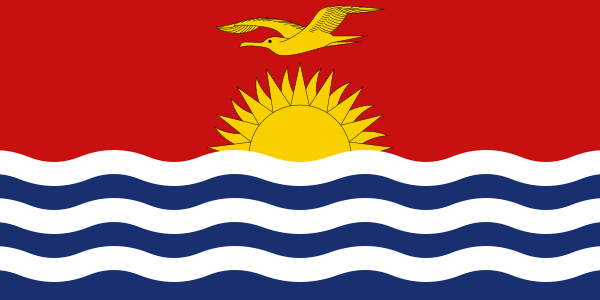Difference between revisions of "Bauro and Adoption (under Kiribati)"
(Created page with "{{#eimage: http://upload.wikimedia.org/wikipedia/commons/thumb/d/d3/Flag_of_Kiribati.svg/600px-Flag_of_Kiribati.svg.png |410x579px|thumb|'''Kiribati Flag'''<br />Source: W...") |
(No difference)
|
Revision as of 03:35, 29 May 2014
History
The Pacific island country of Kiribati (formerly the Gilbert Islands) includes the atoll of Abemama, inhabited by the tribe of Abemama, Kuria and Aranuka. The hereditary high chiefs of these people, the uea, rose out of a previously egalitarian society in the early 18th century, when a powerful man named Tetabo arose and established himself as mataniwi-iaon-te-aba, or master on the land. Tetabo's grandson, Tawaia, was proclaimed the first uea, but he had no children. Tawaia adopted the son, Baiteke, of his father's second wife, Teaa, although it was given out that he was actually Tawaia and Teaa's son. Baiteke's son, Binoka (who is mentioned in Travels in the South Seas, by Robert Louis Stevenson, who lived on the atoll for nine months), was also childless, in spite of allegedly having 40 wives and 20 concubines, and so he adopted his nephew, Bauro, son of his younger brother, Timon. Bauro reigned for a short time but also had no children and the succession passed to his nephew, Tokatake, but without him being adopted.
On another atoll in the group, Abaiang, the uea in the middle of the 20th century was Arirei, the niece and adopted daughter of the previous uea, Kaiea III, and the birth daughter of Kaiea III's sister, Kinateo. Arirei is the first known female uea of the I-Kiribati people.
References
Roberts, R.G. "The Dynasty of Abemama," Journal of the Polynesian Society, 62(3) (September 1953), pp. 267-277
- Adoption Celebrities
- Adopted Persons
- Polynesian, Melanesian
- Kiribati
- Nationality or Citizenship
- Rulers, Nobles, Chiefs, Presidents, Prime Ministers
- To Provide Heirs, As Protégés, etc.
- Wealthy, Famous, Noble or Divine Adoptive or Foster Families
- Customary or Traditional Adoption, Informal and Extra-Legal Care
- Parents Married (or Partnered) to Each Other
